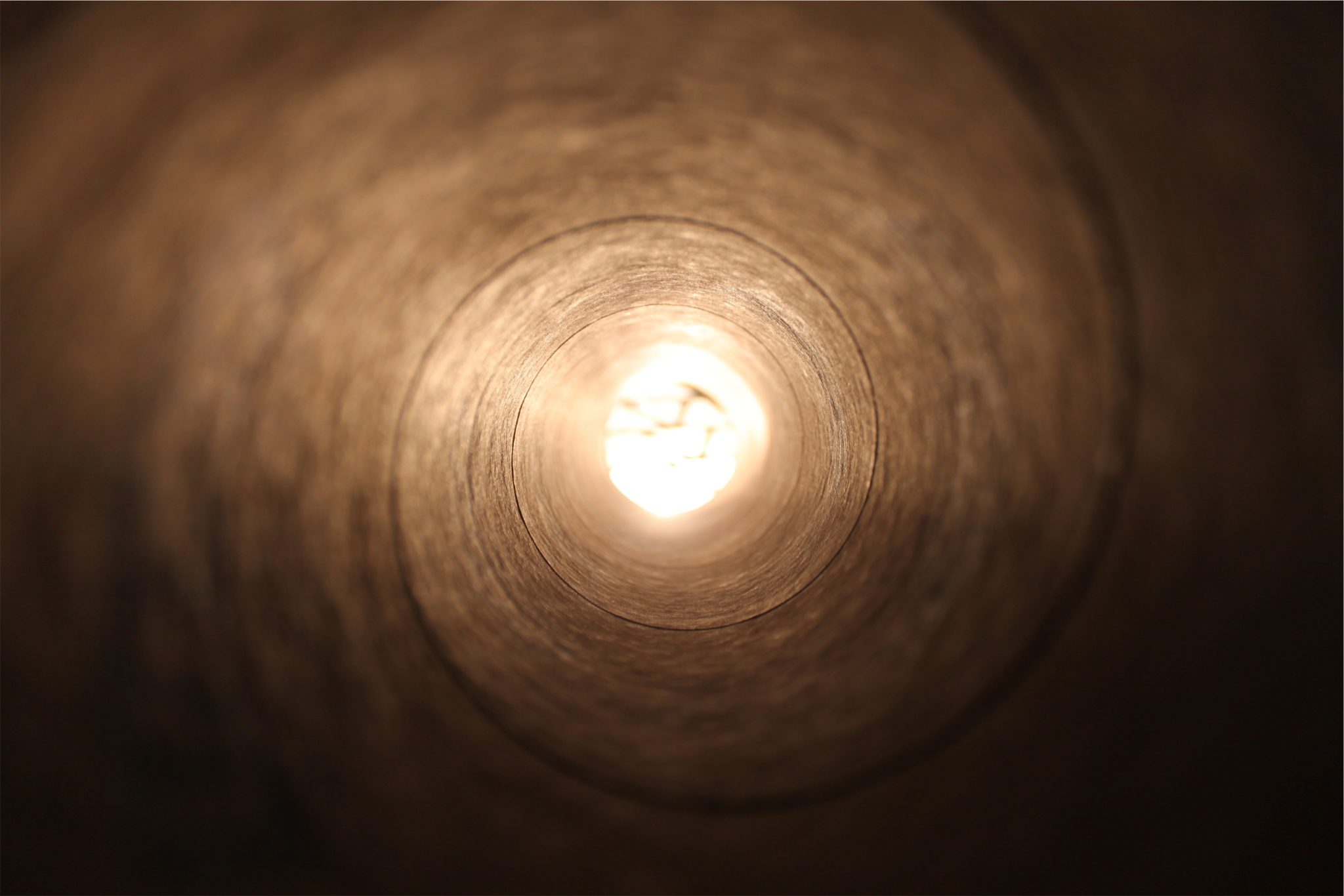And G-d spoke to Moses at Mount Sinai, saying: speak to the children of Israel and tell them… for six years you may plant your fields, prune your vineyards and harvest your crops. But the seventh year is a year of resting for the land… you may not plant your fields nor prune your vineyards.
Leviticus 25:1- 4
Why is the commandment of shemittah [the law to rest the land every seven years] associated specifically with Mount Sinai; were not all of the commandments given at Mount Sinai? Rather the Torah is telling us that just as shemittah was taught at Mount Sinai both in a general manner and in specific detail, so too all of the mitzvot were taught at Mount Sinai both in a general manner and in specific detail.
Rashi on verse
We live in a time of unprecedented material prosperity and technological advancement. The benefits of these technologies affect every aspect of our lives, from education to entertainment, from business to health. As the computer/technology revolution propels us on a journey towards material and physical contentment, we may ask whether these advancements can in any way be integrated with spiritual growth. Many philosophies contend that spirituality is an ethereal, transcendental state, unencumbered by physicality and corporeality. Judaism however has a different perspective.
One
Twice daily we affirm G-d’s unity by proclaiming:
“Hear, O Israel, the Lord is our G-d, the Lord is One.”[1]
In reality, the meaning of G-d’s unity is not only that there are no other forces or powers existent in creation, but even more so, that there is nothing else which exists besides for Him, including creation itself.[2] Just as images conjured up in a person’s mind have no real existence of their own outside his mind and are all composed of the same substance called “thought,” the same is true regarding G-d and His creation: the totality of creation is merely the physical manifestation of Divine energy, which is the true and only “substance” in existence.
So although the world appears to be a viable reality, distinct from G-dliness, the very opposite in fact is true: the only reality is the Divine reality, of which the world is merely a projection. Just as G-d is utterly quintessential, having no beginning or end, creation similarly feels itself as a quintessential existence, without beginning or end. The reason why the world feels itself as a self-sustaining entity is that it in fact is nothing other than G-dliness.[3]
This then is the true meaning of the verse, “I am G-d; I have not changed.”[4] Many great philosophers have concluded, based on this statement, that after creating the world G-d promptly gave over its control to other forces.[5] It is impossible to say, they maintain, that G-d remains intimately involved with creation and yet is not affected by it. The mere notion that the Supreme Being, the Ultimate Truth, could even be associated with such a lowly, fragmented world evokes cries of protest. Accordingly, you can forget about miracles, Divine Providence, or anything of the sort.
In light of the above explanation, however, a completely different picture emerges. The reason why G-d is not affected by creation is not that He is completely detached from it; on the contrary, the fact that He and His creation are one is what makes it possible. Therefore, the meaning of G-d’s proclamation is: just as there existed only G-d before creation, the same holds true even after creation —there is still only one existence, that of G-d, for He is the very definition of existence, indeed, the substance of creation. Thus, nature itself is Divine; the very physicality of earth,
G-dly.
Excavation
These two perspectives differ not only ideologically, but practically as well.
How is one to attain spirituality? According to the philosophers, one must transcend the limitations of this world, essentially cutting oneself off from materiality to reach a sublime state conducive to spirituality. As long as one remains trapped within the confines of this world, they say, he will never truly experience spiritual fulfillment, for G-d is effectively “locked out” of His own creation.
Judaism teaches, however, that spirituality is realized not through leaving the natural order, but rather by peeling away the external layers of obscurity to reveal the Divinity inherent in creation, the G-dliness that is manifest expressly in this world. So while others believe that G-d and the world are contradictory and that the natural must be shunned to reach Divinity, we believe that G-d is not limited to the realm of the spirit, and is found in His creation as much as in the cosmos.
And this is the purpose of our existence, the why and wherefore of creation. Our sages explain:
“G-d desired to have an abode in the lower realms.”[6]
Our mission is not to create something that does not exist, rather to reveal the G-dliness that is already embedded within creation, to prove that there in fact is no dichotomy between spirit and matter, the infinite and the finite.
That is also why the mitzvot are primarily physical acts performed with physical objects, for it is only then that we are able to reveal how divinity exists within even the most mundane and material aspects of creation, which is the objective of our being.
Ground Work
Based on the above explanation we can better understand the statement of Rashi quoted at the beginning of this essay. Why did the Torah choose the mitzvah of shemittah, the obligation to refrain from all land-related work every seven years, as the basis of derivation that all of the mitzvot were taught at Mount Sinai both in a general manner and in specific detail? The Torah should have used a more “fundamental” mitzvah, such as giving charity or observing the Sabbath.
But in fact, it is specifically shemittah that expresses the whole purpose of the mitzvot. During the shemittah year, one was not permitted to work the land in any fashion. This expressed one’s complete faith and unwavering devotion to G-d, to trust that He would provide the necessary sustenance in an entirely supernatural way. Yet, in all other aspects, the seventh year was an ordinary one, for other forms of work could be performed; only the work pertaining to the land was prohibited.
This then epitomizes the concept of the mitzvot: to reveal the supernatural within the natural, the Divinity within the mundane, the spirit within the matter. This is why the mitzvah of shemittah is the source from which derive all of the other mitzvot, for it conceptualizes the purpose of mitzvot, and ultimately, the purpose of creation.[7] So the next time you have the opportunity to do a mitzvah, don’t pass up the chance, dismissing it as a trivial, meaningless act. Know that the whole journey, indeed, the single mission that unites all of mankind and the entire passage of history, is depending on it.
Based on addresses of the Rebbe given Shabbat Parshat Behar 5718 (1958) and on various other occasions[8]
Adapted from the teachings of the Lubavitcher Rebbe by Ari Sollish.
[1] Deuteronomy 6:4
[2] See Derech Mitzvosecha, Mitzvas Achdus Hashem, pp.118-124
[3] Tanya, Iggeres Hakodesh section 20, pp.130a-b
[4] Malachi 3:6
[5] The great codifier of Jewish Law, Rabbeinu Moshe ben Maimon (Rambam), writes that this ideology in fact forged the foundation of idolatry and the complete denial of a “Creator”. See the beginning of his Laws of Idolatry.
[6] Midrash Tanchuma Parshat Naso 16, Parshat Bechukotai 3; Midrash Bamidbar Rabba 3:6; Tanya, beginning of Chapter 36.
[7] Although generally speaking the Sabbath also represents the fusion of spirit and matter, there are ultimately so many special laws governing it that it feels like a completely holy day, without this fusion at all.
[8] Likkutei Sichot, vol. I, pp.273-276.







